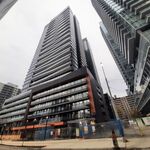Northern Light
Superstar
How much flexibility is there with vehicle lane widths?
I general, you can go down to ~3.0M for a vehicle lane (through traffic), though curb lanes on roads w/buses and trucks will tend to get 3.3M more often than not, as a floor.
Queue lanes, like parking lanes can be less wide due to slower movement, maybe as tight as 2.5M
On 4-lane road, there isn't typically enough surplus to squeeze out a minimally acceptable bike lane, never mind one with separation.
7-lane roads, where maybe, arguably, you can remove the centre lane are much more interesting.
5-lane configurations with a centre lane, same thing, though you have fewer through lanes you can manipulate.
You really want 1.8M for a painted bike lane, but if you want a buffer of any kind, add add at least 0.3M or 2.1M. That's not an absolute hard minimum, but its close.
Ideally you would want more space to play with.




